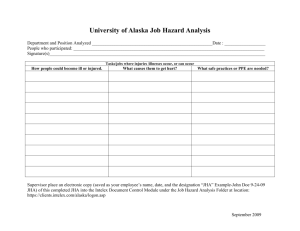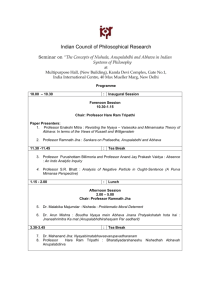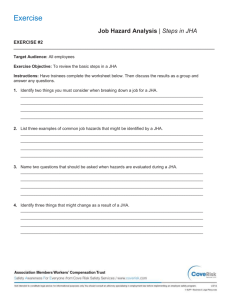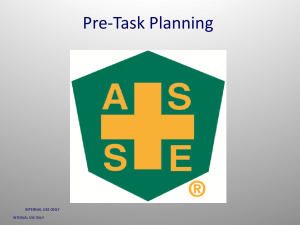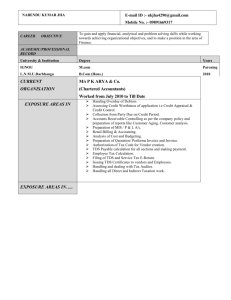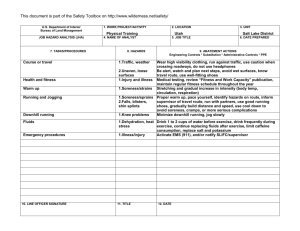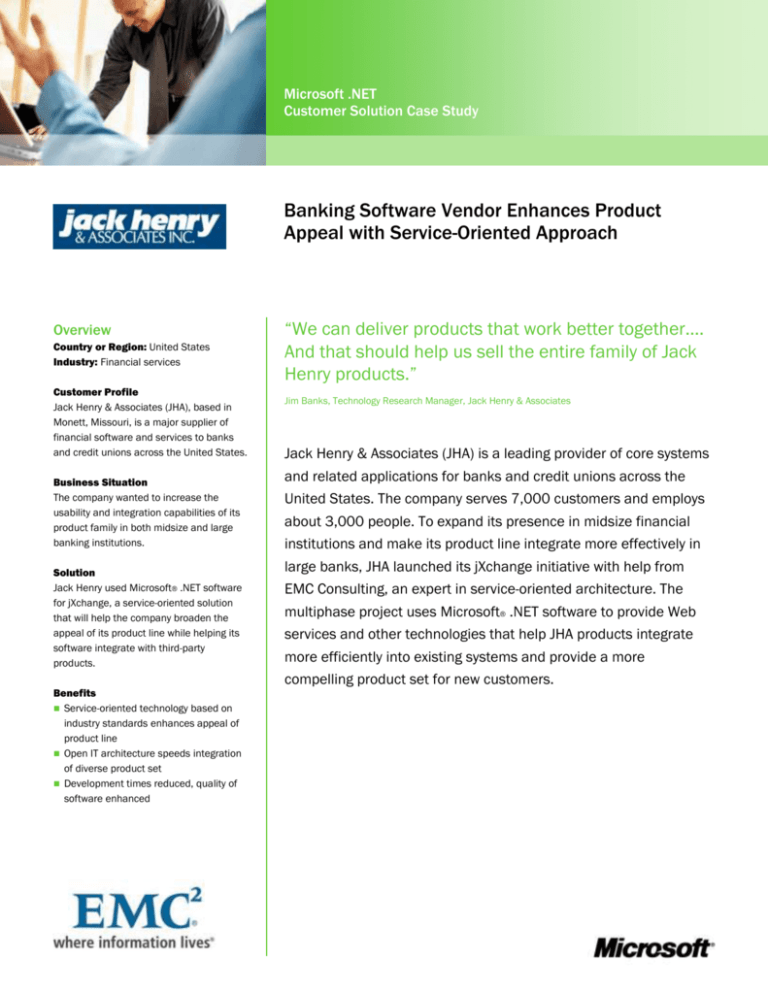
Microsoft .NET
Customer Solution Case Study
Banking Software Vendor Enhances Product
Appeal with Service-Oriented Approach
Overview
Country or Region: United States
Industry: Financial services
Customer Profile
Jack Henry & Associates (JHA), based in
Monett, Missouri, is a major supplier of
financial software and services to banks
and credit unions across the United States.
Business Situation
The company wanted to increase the
usability and integration capabilities of its
product family in both midsize and large
banking institutions.
Solution
Jack Henry used Microsoft® .NET software
for jXchange, a service-oriented solution
that will help the company broaden the
appeal of its product line while helping its
software integrate with third-party
products.
Benefits
Service-oriented technology based on
industry standards enhances appeal of
product line
Open IT architecture speeds integration
of diverse product set
Development times reduced, quality of
software enhanced
“We can deliver products that work better together.…
And that should help us sell the entire family of Jack
Henry products.”
Jim Banks, Technology Research Manager, Jack Henry & Associates
Jack Henry & Associates (JHA) is a leading provider of core systems
and related applications for banks and credit unions across the
United States. The company serves 7,000 customers and employs
about 3,000 people. To expand its presence in midsize financial
institutions and make its product line integrate more effectively in
large banks, JHA launched its jXchange initiative with help from
EMC Consulting, an expert in service-oriented architecture. The
multiphase project uses Microsoft® .NET software to provide Web
services and other technologies that help JHA products integrate
more efficiently into existing systems and provide a more
compelling product set for new customers.
“We think the
effectiveness of our
development work will
improve exponentially
over time when there is
less software to test
[and] when there is
better implementation
and integration.”
Mark Forbis, General Manager for Technology
Services, Jack Henry & Associates
Situation
Jack Henry & Associates (JHA) provides
technology for the financial services industry,
specializing in core banking systems and
data processing applications for banks and
credit unions. The company’s 5 core systems
and approximately 100 complementary products include teller automation, interactive
voice response, proof of deposit, check
imaging, Internet banking and bill payment,
and branch sales automation. Through a
network of facilities across the United States,
Missouri-based JHA also provides services
such as training, outsourced data and item
processing, and disaster recovery. The company has about 7,000 customers and
employs about 3,000 people.
JHA is a dominant U.S. supplier of bank technology, with roughly 25 percent of small and
mid-tier institutions using some combination
of JHA products and services. In recent years,
JHA executive management adopted a longterm strategy of expanding the company’s
market share in the mid-tier institutions—
defined as having from U.S.$1 billion up to
$20 billion in assets—while also addressing
the needs of large financial institutions for
better integration of JHA systems and
applications.
Mid-tier banks and large credit unions
typically offer more diverse products and
services and demand more software functionality than their smaller counterparts do,
which also means they need better integration of systems and applications to control IT
overhead and provide better customer service. At larger banks, the key demand is for
systems with an open architecture that enables seamless integration of applications
from a variety of vendors, which in turn
provides banks with flexibility in their
selection of software.
“To follow through on our business strategy,
we had to make sure that our core
applications could effectively communicate
with essentially any possible third-party
application that our large bank clients already
had in place. These third-party applications
run on a range of hardware and operating
systems including UNIX and Windows®, with
the IBM xSeries and iSeries being the most
common server hardware,” says Jim Banks,
Technology Research Manager for Jack Henry
& Associates. “Meanwhile, our mid-tier customers are continually looking for enhancements that can help them with their own
system integration needs, which can positively affect their business growth.”
JHA had to determine the most cost-effective,
efficient method of providing integration
between its core products, its complementary
products, and applications from other software vendors. The company’s IT staff
determined that working with EMC
Consulting, a Microsoft® Gold Certified
Partner that specializes in service-oriented
architecture (SOA), would speed their
development efforts.
Together, JHA and EMC Consulting initially
considered an integration solution based on
Java. However, both companies agreed that
the only way to be sure of the choice would
be to conduct tests to determine whether
Java would work effectively versus other
options.
Solution
Jack Henry & Associates and EMC Consulting
conducted several proof-of-concept tests.
While Java-based software met some of JHA’s
cost and basic interoperability requirements,
it did not provide satisfactory performance for
data-rich, transaction-intensive banking
systems. The test providing the best results
used Microsoft .NET software running on an
Intel processor–based server computer.
JHA selected Microsoft .NET as the foundation for an “interoperability gateway” that the
company calls jXchange. Components of the
service-oriented architecture underlying
jXchange include the Microsoft Windows
Server™ 2003 operating system, SQL
Server™ 2000, the Visual Studio® .NET 2003
development system, and Web Services
Enhancements (WSE)—an add-on to the
Microsoft .NET Framework and Visual Studio
.NET that provides developers with advanced
Web service capabilities. JHA uses WSE for a
variety of functions such as creating filters
and increasing security for Web services. JHA
also uses Universal Discovery, Description,
and Integration (UDDI), which acts as a
directory for helping publish and find Web
services.
The jXchange development was started in
2004, with two phases planned. The initial
phase involves pilot projects at JHA customer
sites. After analyzing data from these pilot
projects, JHA is scheduled to deploy the
jXchange integration solution to customers
around the country in late 2005. The second
phase involves incorporating Web services
and other technologies into the key JHA
product lines, a process scheduled to be
completed near the end of 2006.
Benefits
Combining Microsoft .NET software, Web
services, and EMC Consulting expertise in
service-oriented architecture, Jack Henry &
Associates is addressing two key business
goals: providing an IT infrastructure that will
encourage banks to continue using and
adding JHA products, while making it easier
for JHA to improve the flow of information
between its own applications as well as with
third-party applications.
Important benefits of the technology foundation in jXchange include:
Greater marketability for the full range
of JHA products through use of serviceoriented technology
Reduction in the cost and maintenance of
JHA systems
Faster integration for new products, business partners, and third-party applications
Faster development times and higher
quality software, which will help cut JHA’s
internal costs while increasing the appeal
of its product line
“This technology helps us execute our business strategy of becoming more pervasive in
the mid-tier space,” says Banks. “With the
jXchange initiative, our products not only
perform specific tasks but also provide the
primary hub for many of our customers’
banking systems. So there are many other,
non–Jack Henry products connecting to our
systems.”
Interoperability makes it easier for other
vendors to integrate with JHA products. “We
also believe that this technology strengthens
our own integration and reuse of code within
our own family of products,” Banks says.
“This will enable us to take advantage of a
service-oriented architecture so we can
deliver products that work better together.
Microsoft .NET will help us reduce the overall
maintenance and integration costs of our systems. And that should help us sell the entire
family of Jack Henry products to customers
ranging from the smallest community bank to
the largest institutions in the country.”
Greater Market Appeal of Product Line
The JHA image as a banking technology solution company is enhanced by using an open,
service-oriented architecture, according to
Mark Forbis, General Manager for Technology
Services at JHA.
“By adopting a service-oriented approach, we
improve our image among our customers—
especially large financial institutions—as
well as industry analysts and research
companies,” Forbis says. “This helps our
marketability. Use of finance industry
standards such as XML-based Web services
positions JHA as using the latest and best
technology. For larger institutions, many of
their existing applications already are compatible with XML, so that makes it easier to
sell into this market segment.”
By converting the JHA applications into open,
Web service–based products, the company
can provide more cost-effective yet powerful
solutions for customers, while boosting its
reputation as a premier provider of financial
services technology.
“New customers usually want to know what
kind of standards and technologies we are
using. They want to hear the words ‘open’
and ‘Web services.’ And they are always
looking for a solution that will allow them to
integrate multiple vendors through a solid
middleware platform,” Forbis says.
“The promise of jXchange is to provide
reduced overhead—both for our customers
and for us—in building software applications,
increased return on investment, and maximized service capability. This results in higher
customer satisfaction, easier product creation, and true multivendor/multiplatform
openness.”
Fast Integration of Products and
Partners
As JHA introduces new products—developed
internally, through partnerships, or through
acquisitions—these applications will be
assimilated much more quickly because
the service layer will already be in place. The
service layer also is open for integration with
third-party applications.
“The benefits also apply to integration with
B2B [business-to-business] service partners,”
says Forbis. “In particular, products that
already integrate through [Web service]
messages will be well prepared to integrate
with existing JHA products.
“The bottom line is that our customers don’t
want to spend a lot of development hours
creating the integration that they need to
make their particular set of technologies work
together. A service-oriented architecture does
not make all problems go away. But it goes a
long way toward providing a standards-based
approach that makes integration issues
much easier to deal with.
“This helps us on the sales side because
we’re using open systems that are easy to
work with. We can approach a customer and
say, ‘You can buy our document imaging
product. Or you can buy someone else’s, and
we can provide the integration to make it
work.’ It’s a powerful sales tool that
strengthens our relationship.”
Improved Development Times, Higher
Quality Software
JHA and EMC Consulting also chose .NET and
Web services to help reduce development
times and associated costs while enhancing
software quality.
Joel Geyer, Senior SOA Architect at EMC
Consulting, says Web Services
Enhancements is one example of how .NET
tools help expedite the development process.
“WSE has saved us a tremendous amount of
time,” Geyer says. “For instance, the use of
input filters and policy allows us to prevent
business logic from being corrupted by
processing logic. And, rather than repeating
code and tying services to a hierarchy, we can
build filters that encapsulate behavior, and
then it is dynamically applied to an
application at run time. This creates
tremendous flexibility and improves
performance of the applications.”
Banks says the reusability of code in the
jXchange service-oriented architecture is an
enormous benefit to developers. “It’s not
surprising that there is little reuse of code in
most software today,” he says. “Even JHA
products are sometimes guilty of duplicating
software business logic for various purposes.
Through a modern, service-oriented integration solution, code reuse will become the
norm and will form the foundation of trusted
business process consistency in and between
our own products, as well as a financial
institution’s other products.”
With reusable code, JHA and non-JHA vendor
software will be able to query and reuse business services that are arranged according to
specific needs. Developers can first try reusing existing business services; they can go on
to build new software if they can’t find the
code that they need.
Due to the highly reusable nature of Web
services, there is less code to be tested. “We
think the effectiveness of our development
work will improve exponentially over time
when there is less software to test, when
there is better implementation and integration, and when there are well-defined
requirements through integration software
templates,” Forbis says. “Software will be
higher quality and take less time to deliver.
“The Microsoft .NET technology lays the
foundation for the future,” he continues.
“It just makes sense from the standpoint of
our core and complementary products being
able to leverage a single service. We have
a multiyear strategy and frankly, with the
growth of Web services and service-oriented
architecture and standards, the timing is
right. The industry as a whole is moving in
this direction, and this puts us right there
with our competitors—and maybe ahead of
some of them.”
For More Information
Microsoft .NET
For more information about Microsoft
products and services, call the Microsoft
Sales Information Center at (800) 4269400. In Canada, call the Microsoft
Canada Information Centre at (877) 5682495. Customers who are deaf or hard-ofhearing can reach Microsoft text telephone
(TTY/TDD) services at (800) 892-5234 in
the United States or (905) 568-9641 in
Canada. Outside the 50 United States and
Canada, please contact your local
Microsoft subsidiary. To access information
using the World Wide Web, go to:
www.microsoft.com
Microsoft .NET is software that connects
people, information, systems, and devices
through the use of Web services. Web
services are a combination of protocols that
enable computers to work together by
exchanging messages. Web services are
based on the standard protocols of XML,
SOAP, and WSDL, which allow them to
interoperate across platforms and programming languages.
For more information on EMC products,
services and solutions, please visit:
www.emc.com
To contact someone at EMC directly,
please see www.emc.com/contact-us for
updated contact information and a list of
local international offices.
.NET is integrated across Microsoft products
and services, providing the ability to quickly
build, deploy, manage, and use connected,
secure solutions with Web services. These
solutions provide agile business integration
and the promise of information anytime,
anywhere, on any device.
For more information about Microsoft .NET
and Web services, please visit these Web
sites:
www.microsoft.com/net
msdn.microsoft.com/webservices
For more information about Jack Henry &
Associates products and services, call
(417) 235-6652 or visit the Web site at:
www.jackhenry.com
Software and Services
Microsoft Visual Studio .NET 2003
Microsoft Windows Server System™
− Microsoft Windows Server 2003
− Microsoft SQL Server 2000
© 2005 Microsoft Corporation. All rights reserved.
This case study is for informational purposes only. MICROSOFT
MAKES NO WARRANTIES, EXPRESS OR IMPLIED, IN THIS
SUMMARY.
Microsoft, Visual Studio, Windows, Windows Server, and
Windows Server System are either registered trademarks or
trademarks of Microsoft Corporation in the United States and/or
other countries. All other trademarks are property of their
respective owners.
Document published June 2005
Technologies
− Web services
Partners
EMC

